By: Jake
Above Photo By: Perry Aidelbaum
View more autocross action photography at http://autox4u.zenfolio.com/
The old 3 inch exhaust was prone to leaks at almost all the flanges, and despite a highly upgraded cooling system, the RX7 still had heat issues that needed to be addressed. In the never ending battle to chase away rapidly moving molecules of unwanted heat energy away from the sensitive turbo wankle power-plant, the car went back under the trusty knife of Speed1's top fabricator, Jordan.
Armed with various pieces of 4 inch wide exhaust components, Jordan alternated glances between the star-like fire of his welding arc and the schematic exhaust plan devised by yours truly during work hours - everyone at my office assumed the drawing was a plumbing schematic for a work related construction job.
The final product was a masterfully sculpted 4 inch turbo-back exhaust that afforded the ability to swap the axle-back assembly between any combination of muffler, down-turn, and high-flow catalytic converter through the use of v-bands. No more running from Chief of Sound at SCCA Solo Tours and Pros. The car can go from uber-hush sleeper to fire-blowing dragon simply by turning a couple of nuts. Quite possibly the most rewarding function of the end product was that the exhaust no longer leaked! Exhaust leaks were an issue that plagued the old 3" system from the manifold back to the rear axle and constantly left any passenger in a state of despair and disgust - especially in traffic.
The OEM radiator orientation had forced hot air onto every crucial component in the engine, including the intercooler, intake pipes, intake manifolds and turbo to name a few. A "V-Mount" intercooler/radiator assembly is the fix for this oversight by Mazda engineers. Jordan modified the radiator and intercooler orientation with custom brackets, mounts, coolant lines and intercooler pipes. Now the radiator expels heat underneath the car rather than on the intake components and the intercooler can breathe free via an enormous reverse scoop fabricated into the hood.
Sporting a "cooler" setup and an exhaust my leg could pass through, the car was strapped to Speed1's dynojet for a fresh tune. Attempts to regulate boost via the Apexi PFC failed. The boost controller hardware in the PFC has been known to fail so we quickly swapped to a Greddy Profec electronic boost controller, which managed the wastegate function with ease. The car spun the rollers with 370whp at 1 bar of boost pressure. Before we could pour xylol into the gas tank for a high-octane / high-boost (20 psi) dyno pull, the dyno computer crapped out. After repairs were made to the dyno, we returned for the final test and tune, where the car laid down 424whp at high boost. The changes to the set-up from the previous year yielded 40 whp pick up on a Dynojet.
Before finalizing the high boost map, Elena and I tested the car at a Philly SCCA Test & Tune event. Here is a video of my fastest lap that day.
Before finalizing the high boost map, Elena and I tested the car at a Philly SCCA Test & Tune event. Here is a video of my fastest lap that day.



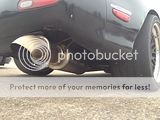
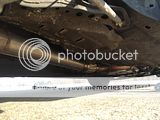
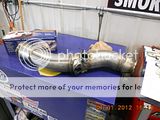


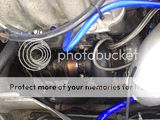
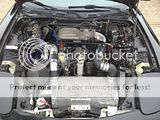
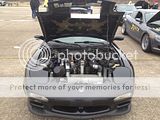



No comments:
Post a Comment